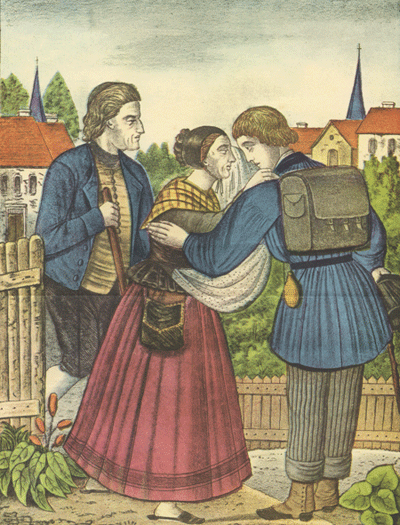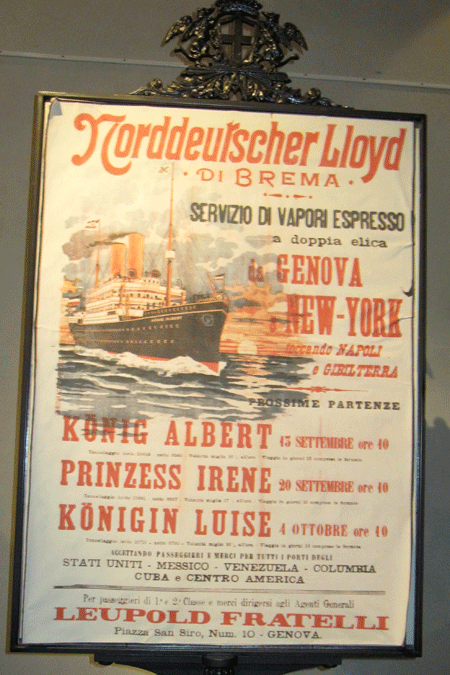The first wave of emigration from Rhineland-Pfalz (Palatinate) took place after the 30 Year War (1618-1648) between the Protestants and Catholics.
The French took over the Palatinate and many other areas after the war in their quest to expand France as far as the left bank of the Rhine.
Louis XIV’ troops attacked and destroyed many of the towns in the area around Worms and other cities in the Palatinate.
In 1668-97 there was a war of succession for the Palatinate ‘Kurfurst’ (prince) after the reigning line ended. The war led to extreme destruction and the mass movement of people in the region.
Religious persecution was also creating upheaval. The Huguenots were among the earliest to leave Mannheim in the Palatinate for New York in the 1660’s. Soon thereafter the Mennonites in the region joined the Quakers in Krefeld, who were led by William Penn, to resettle in Pennsylvania.
For those who stayed behind, the years 1701-1714 were bleak. During the War of Spanish Succession, the rulers demanded residents to pay expensive requisitions for their war. This came at a time of extreme weather and crop failure. For instance, in the winter of 1708/09, it was so cold that the wine was reported to have frozen in its barrels. In 1707, there had also been a hailstorm that ruined the entire wheat and wine crop. People were desperately poor and on the brink of ruin.

Many left. About 13,000 Palatinate residents went to England. Queen Anne was persuaded to send the ‘refugees’ to one of her colonies in Newburgh, NY. She quickly discovered that the demand was greater than the capacity to provide for all. Many were deported. Only 3,000 were shipped to America, and half of them died on the journey.
Prior to the American Revolution, about 100,000 Germans emigrated to the USA. Between 1727-1740, 80 ships arrived in Philadelphia. The next year 159 ships arrived. With a brief respite during the Seven Years War (Britain/France), emigration to the US resumed with another 88 ships before the end of the decade.
The conditions on the ships were abysmal. They were overcrowded, full of illness and danger. The 6 to 8 week crossing was completely dependent on the weather. When they finally arrived, the passengers were met by their employers upon docking. Families were broken up never to meet again.
The conditions for these workers were generally good, because the bosses were afraid that their indentured workers would otherwise run away. When the ‘script’ service time was completed, the new Americans were allowed to live freely. They moved to cluster communities, where they continued to speak German. Between 1732-1800 there were at least 38 newspapers published in German in the US.
Emigration dwindled during the Revolution, but picked up afterwards. With the introduction of public schools in 1834, soon even the German churches were holding their services in English. Family names were increasingly anglicized. America was becoming known as the land of freedom and economic opportunity. Around 6 million Germans immigrated into the United States between 1820 and 1930.

Back in the Palatinate, there was a severe harvest failure in 1817, following the 1815 explosion of Mount Tambora in Indonesia in 1815. 1816 is called the ‘Year without a Summer’ in Europe.
Again people were on the move because of the agricultural and economic hardships. During this period, many from the Palatinate went to Brazil, which was actively promoting economic opportunities and land ownership.
But by the 1830’s immigration to the USA had picked up again. Over 2 million Germans left for the USA between 1846 and 1873.
By this time, they weren’t just leaving for the opportunity of farming. The Industrial Revolution was firmly established and jobs in manufacturing were a new lure for emigrants.
Other reasons for the popularity of emigration to the USA:
° Extreme population growth after the French take-over of most areas in Germany along the west bank of the Rhine, including the Palatinate
° Better medical treatments and improved longevity
° New laws based on Napoleonic Code that made all children equal inheritors, leading to the break up of many family farms into smaller, less competitive agricultural units
° Trade freedom introduced by the French, leading to an over-supply of workers in traditional occupations
° The introduction of excise taxes by the local Palatinate government making it more expensive for farmers to export wheat, wine etc. to other German states.
Then two famine waves hit in 1846 and 1853 following harvest failures. Some local governments even paid to send families to the USA in order to reduce the number of poverty stricken dependents locally.
There were also political and religious and personal motivations for emigration; from running away from an unwanted marriage, to avoiding jail/bail, family infighting, military inscription, adventure etc.
Bremen was one of the most important passage starting points by the 1830’s. Originally sent along with cargo shipments of tobacco, the passengers quickly become the main source of income for the shipping companies. By 1840, Bremen was shipping 20,000 people a year to the USA.
‘Auswanderbüros’ (emigration companies) recruited passengers, which is suggested as one motivation why some passengers went to avoid unpleasant personal matters.
In 1849 a law was passed to limit the number of passengers on the horribly overcrowded ships to about half of what they had been.
The ship costs of a passage at the time costed about 5,000 Taler, about $167,000 in today’s value.
Sources:Aufbruch nach Amerika 1709-2009 – 300 Jahre Massenauswanderung aus Rheinland-Pfalz, Ausstellung m Theodor-Zink-museum Kaiserslautern, Kaiserslautern 2009 (=Schriften des Theodor-Zink-Museums 17)More information about German immigration from Bremen to USA: http://www.revisionist.net/hysteria/german-exodus.html
